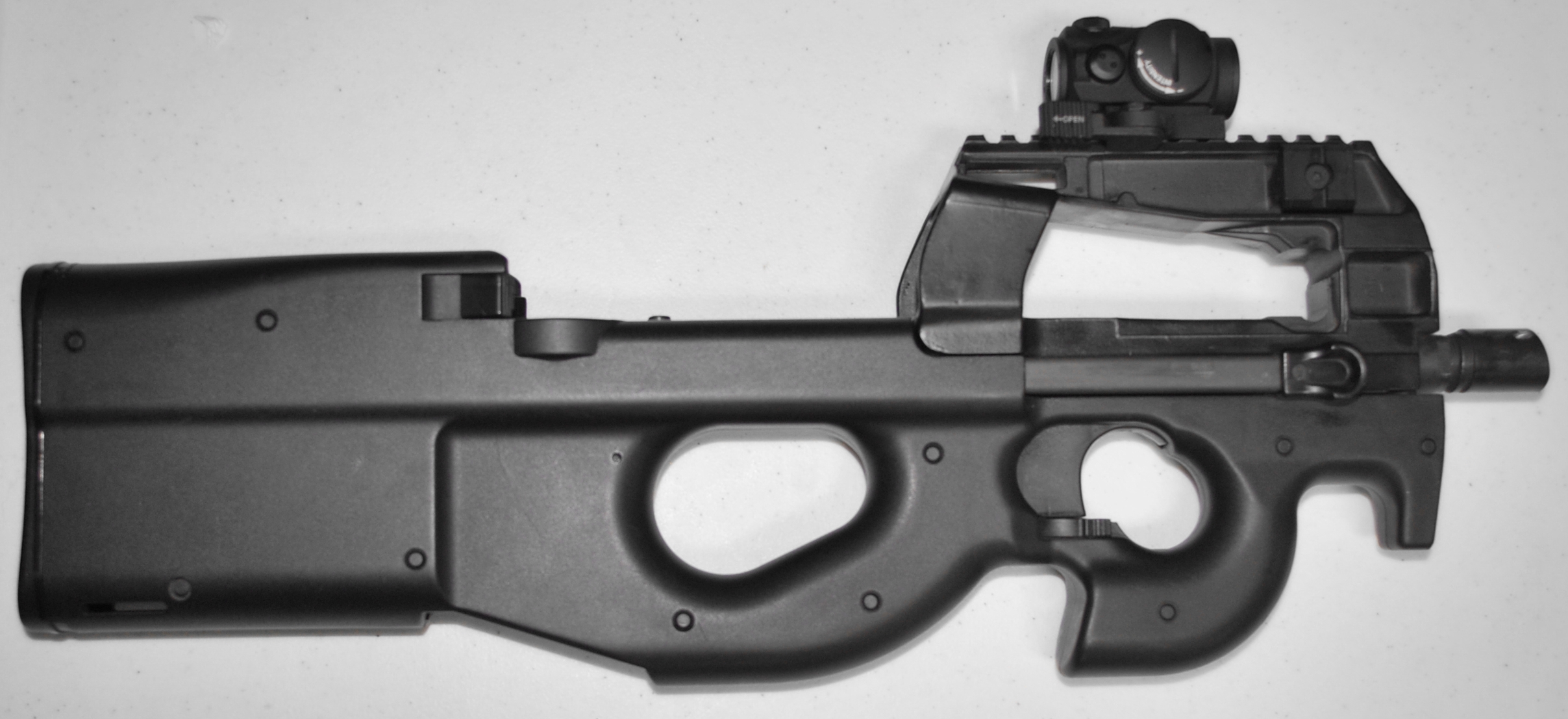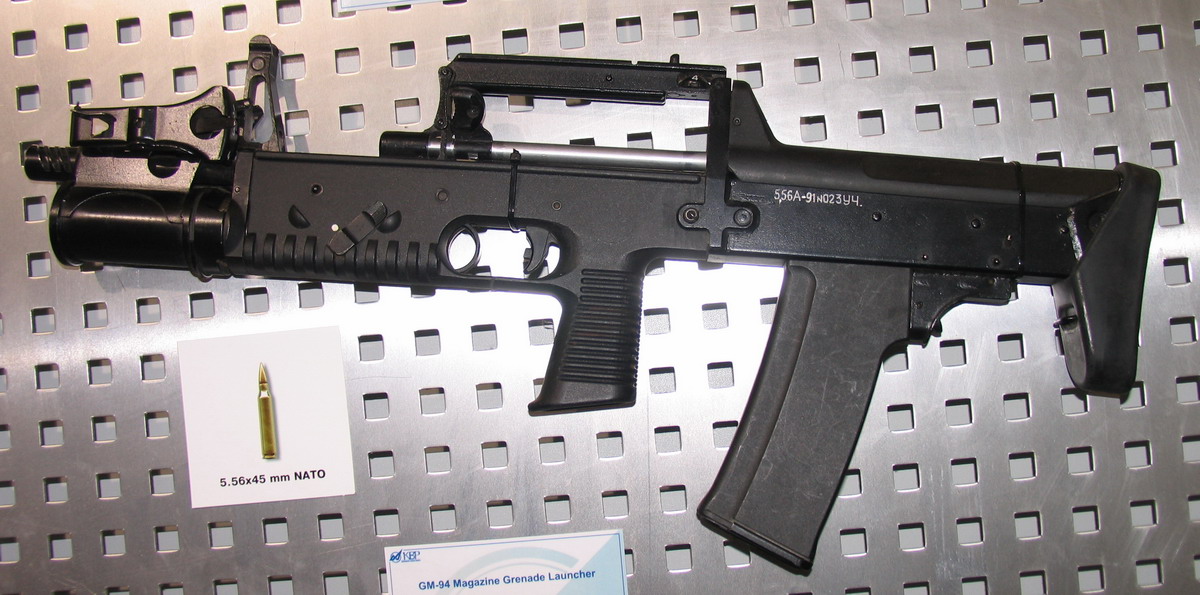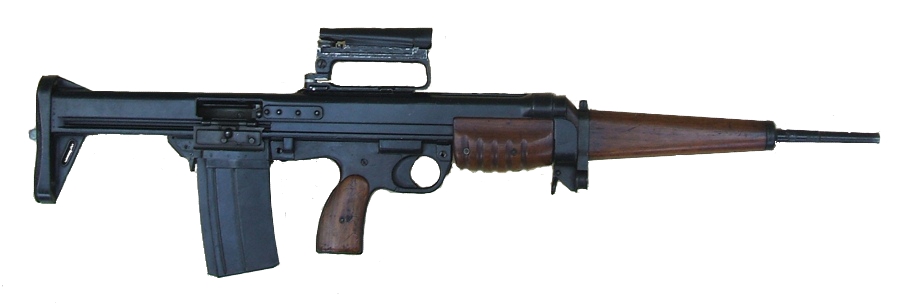|
Model 45A
The Model 45A was a .30 caliber bullpup battle rifle/light machine gun developed by the United States Army in the Philippines in 1945. The weapon existed in prototype or mockup form, but never entered production. The rifle was sparsely documented until annotated photographs of the rifle were found in the archives of the United States Army Signal Corps. Design The Model 45A utilized the magazine from the M1918 Browning Automatic Rifle. Rather than iron sights, it featured an integral scope. Its purpose is unclear, but it is alternately described as a "experimental .30 caliber light machine gun (LMG)" or a "field expedient .30 cal." See also * Sieg automatic rifle * SLEM-1 *EM-2 rifle *List of bullpup firearms *List of battle rifles Battle rifles are full-powered rifles, full-length, fully automatic or semi-automatic rifles that have been adopted by a nation's military. The difference between a battle rifle and a designated marksman rifle is often only one of terminology wit . ... [...More Info...] [...Related Items...] OR: [Wikipedia] [Google] [Baidu] |
Philippine Commonwealth
The Commonwealth of the Philippines ( es, Commonwealth de Filipinas or ; tl, Komonwelt ng Pilipinas) was the administrative body that governed the Philippines from 1935 to 1946, aside from a period of exile in the Second World War from 1942 to 1945 when Japan occupied the country. It was established following the Tydings–McDuffie Act to replace the Insular Government, a United States territorial government.. The Commonwealth was designed as a transitional administration in preparation for the country's full achievement of independence. Its foreign affairs remained managed by the United States. During its more than a decade of existence, the Commonwealth had a strong executive and a Supreme Court. Its legislature, dominated by the Nacionalista Party, was at first unicameral, but later bicameral. In 1937, the government selected Tagalog – the language of Manila and its surrounding provinces – as the basis of the national language, although it would be many years befor ... [...More Info...] [...Related Items...] OR: [Wikipedia] [Google] [Baidu] |
Iron Sights
Iron sights are a system of physical alignment markers (usually made of metallic material) used as a sighting device to assist the accurate aiming of ranged weapons (such as a firearm, airgun, crossbow or even compound bow), or less commonly as a primitive finder sight for optical telescopes. The earliest sighting device, it relies completely on the viewer's naked eye (mostly under ambient lighting), and is distinctly different to optical sights such as telescopic sights, reflector (reflex) sights, holographic sights and laser sights, which make use of optical manipulation and/or active illumination, as well as the newer optoelectronics, which use digital imaging and even incorporate augmented reality. Iron sights are typically composed of two components mounted perpendicularly above the weapon's bore axis: a rear sight nearer (or ''proximally'') to the shooter's eye, and a front sight farther forward (or ''distally'') near the muzzle. During aiming, the shooter aligns h ... [...More Info...] [...Related Items...] OR: [Wikipedia] [Google] [Baidu] |
Light Machine Guns
A light machine gun (LMG) is a light-weight machine gun designed to be operated by a single infantryman, with or without an assistant, as an infantry support weapon. LMGs firing cartridges of the same caliber as the other riflemen of the same combat unit are often referred to as squad automatic weapons. Characteristics While early light machine guns fired full-powered rifle cartridges, modern light machine guns often fire smaller-caliber rifle cartridges than medium machine guns – generally the same intermediate cartridge fired by a service's standard assault rifle – and are usually lighter and more compact. Some LMGs, such as the Russian RPK, are modifications of existing designs and designed to share the same ammunition. Adaptations to the original rifle generally include a larger magazine, a heavier barrel to resist overheating, a more robust mechanism to support sustained fire and a bipod. A light machine gun is also defined by its usage as well as its specification ... [...More Info...] [...Related Items...] OR: [Wikipedia] [Google] [Baidu] |
Bullpup Rifles
A bullpup firearm is one with its firing grip located in front of the breech of the weapon, instead of behind it. This creates a weapon with a shorter overall length for a given barrel length, and one that is often lighter, more compact, concealable and more maneuverable than a conventionally configured firearm. Where it is desirable for troops to be issued a more compact weapon, the use of a bullpup configuration allows for barrel length to be retained, thus preserving muzzle velocity, range and ballistic effectiveness. The bullpup concept was first tested militarily in 1901 with the British Thorneycroft carbine, but it was not until the Cold War that more successful designs and improvements led to wider adoption. In 1977, the Austrian Army became the first military force in the world to adopt a bullpup rifle, the Steyr AUG, as a principal combat weapon. Since then the militaries in many countries have followed suit with other bullpup designs, such as the Chinese QBZ ... [...More Info...] [...Related Items...] OR: [Wikipedia] [Google] [Baidu] |
30-06 Springfield Machine Guns
3 (three) is a number, numeral and digit. It is the natural number following 2 and preceding 4, and is the smallest odd prime number and the only prime preceding a square number. It has religious or cultural significance in many societies. Evolution of the Arabic digit The use of three lines to denote the number 3 occurred in many writing systems, including some (like Roman and Chinese numerals) that are still in use. That was also the original representation of 3 in the Brahmic (Indian) numerical notation, its earliest forms aligned vertically. However, during the Gupta Empire the sign was modified by the addition of a curve on each line. The Nāgarī script rotated the lines clockwise, so they appeared horizontally, and ended each line with a short downward stroke on the right. In cursive script, the three strokes were eventually connected to form a glyph resembling a with an additional stroke at the bottom: ३. The Indian digits spread to the Caliphate in the 9th ... [...More Info...] [...Related Items...] OR: [Wikipedia] [Google] [Baidu] |
30-06 Springfield Battle Rifles
3 (three) is a number, numeral and digit. It is the natural number following 2 and preceding 4, and is the smallest odd prime number and the only prime preceding a square number. It has religious or cultural significance in many societies. Evolution of the Arabic digit The use of three lines to denote the number 3 occurred in many writing systems, including some (like Roman and Chinese numerals) that are still in use. That was also the original representation of 3 in the Brahmic (Indian) numerical notation, its earliest forms aligned vertically. However, during the Gupta Empire the sign was modified by the addition of a curve on each line. The Nāgarī script rotated the lines clockwise, so they appeared horizontally, and ended each line with a short downward stroke on the right. In cursive script, the three strokes were eventually connected to form a glyph resembling a with an additional stroke at the bottom: ३. The Indian digits spread to the Caliphate in the 9th ... [...More Info...] [...Related Items...] OR: [Wikipedia] [Google] [Baidu] |
List Of Battle Rifles
Battle rifles are Full-powered rifle cartridge, full-powered rifles, full-length, fully automatic or semi-automatic rifles that have been adopted by a nation's military. The difference between a battle rifle and a designated marksman rifle is often only one of terminology with modifications to the trigger and accuracy enhancements; many of the weapons below are currently still in use, re-designated as DMRs. For intermediate calibers firearms (e.g.: 7.62×39mm, 5.56×45mm) see List of assault rifles. Below is the list of automatic rifles and battle rifles. See also * List of weapons * List of firearms * List of rifles * List of machine guns * List of submachine guns * List of assault rifles * List of bolt-action rifles * List of straight-pull rifles * List of pump-action rifles * List of semi-automatic rifles * List of carbines * List of multiple-barrel firearms * List of pistols * List of revolvers * List of semi-automatic pistols * List of sniper rifles * List of shotguns ... [...More Info...] [...Related Items...] OR: [Wikipedia] [Google] [Baidu] |
List Of Bullpup Firearms
The following is a list of firearms designed in a bullpup (i.e., action behind firecontrol/trigger group) configuration. References {{Bullpup Firearms, Rifles=Pindad SS2 Bullpup Bullpup firearms A bullpup firearm is one with its firing grip located in front of the breech of the weapon, instead of behind it. This creates a weapon with a shorter overall length for a given barrel length, and one that is often lighter, more compact, con ... * ... [...More Info...] [...Related Items...] OR: [Wikipedia] [Google] [Baidu] |
EM-2 Rifle
The EM-2, also known as Rifle, No.9, Mk.1 or Janson rifle, was a British assault rifle. It was briefly adopted by British forces in 1951, but the decision was overturned very shortly thereafter by Winston Churchill's incoming government in an effort to secure NATO standardisation of small arms and ammunition. It was an innovative weapon with the compact bullpup layout, built-in carrying handle and an optical sight. The gun was designed to fire one of the first purpose-designed entirely new intermediate cartridges, designed to a 1945 requirement as a result of combat experience and German advances in weapons design during World War II. The round, the .280 British, was designed to replace the .303 round, which dated to the late 19th century. The EM-2 was intended to replace the Lee-Enfield bolt-action rifles and various submachineguns, while the TADEN would replace the Bren gun and Vickers machine gun. As part of NATO standardization efforts, the United States claimed the .280 ... [...More Info...] [...Related Items...] OR: [Wikipedia] [Google] [Baidu] |
SLEM-1
The SLEM-1 (Self Loading Experimental Model 1) was a semi-automatic battle rifle. The weapon is gas-operated, semi-automatic and feeds from a 10-round magazine. Development Fabrique Nationale's Belgian design team, led by Dieudonné Saive, worked in Britain throughout the war, having escaped the German occupation of Belgium in 1940. They worked for the Small Arms Design Department which had been moved from Enfield to the drill hall at Cheshunt, about five miles away. When the British General Staff decided in 1944 that the future British infantry cartridge would be the 8×57mm IS, already in production for the Besa machine gun and generally more suitable to autoloading weapons than rimmed .303 British cartridge, the Belgian team designed the SLEM-1 (Self Loading Enfield Model 1). When the 8×33mm Kurz was tested everything changed and the British set up the Small Arms Calibre panel that led to the and rounds. The Belgian team then redesigned the SLEM to become the prototype FA ... [...More Info...] [...Related Items...] OR: [Wikipedia] [Google] [Baidu] |
Sieg Automatic Rifle
The Sieg automatic rifle was a bullpup automatic rifle designed by Chief Gunner's Mate James E. Sieg of the US Coast Guard. The weapon was chambered in the .30-06 round, fed from 20 round magazines and capable of firing around 650–700 RPM on full automatic. A two-finger double trigger selected between semiautomatic and fully automatic fire. The barrel came with a unique muzzle compensator that could be turned off for use with a flash hider or grenade launcher without interfering with the installation of a bayonet. Recoil gently threw the barrel of the Sieg rifle downward, not upward. When tested at Fort Benning, it had effective results. The compensator was extremely effective; it also enabled the user to fire the rifle with one hand. Sieg obtained a patent for his compensator in 1948, as USPTO 2451514. See also *Model 45A *List of bullpup firearms *List of battle rifles Battle rifles are Full-powered rifle cartridge, full-powered rifles, full-length, fully automatic or semi ... [...More Info...] [...Related Items...] OR: [Wikipedia] [Google] [Baidu] |
M1918 Browning Automatic Rifle
The Browning Automatic Rifle (BAR) is a family of American automatic rifles and machine guns used by the United States and numerous other countries during the 20th century. The primary variant of the BAR series was the M1918, chambered for the .30-06 Springfield rifle cartridge and designed by John Browning in 1917 for the American Expeditionary Forces in Europe as a replacement for the French-made Chauchat and M1909 Benét–Mercié machine guns that US forces had previously been issued. The BAR was designed to be carried by infantrymen during an assault Article by Maxim Popenker, 2014. advance while supported by the sling over the shoulder, or to be fired from the hip. This is a concept called " walking fire"—thought to be necessary for the individual soldier during trench warfare. The BAR never entirely lived up to the original hopes of the War Department as either a rifle or a machine gun. The US Army, in practice, used the BAR as a light machine gun, often fired from a ... [...More Info...] [...Related Items...] OR: [Wikipedia] [Google] [Baidu] |






